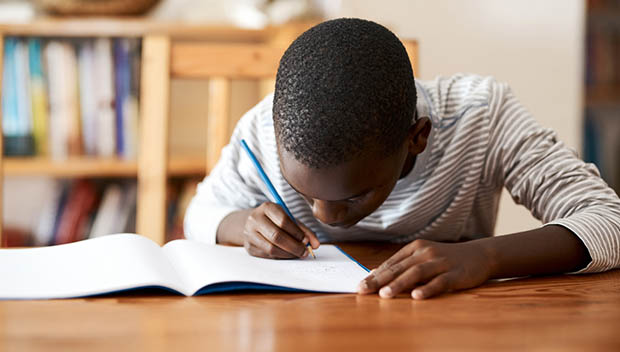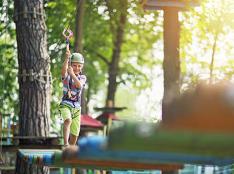
One of the main concerns for adults and children about continued social distancing during the global pandemic is the lack of connection and communication with others.
For school-age children, school has long been the main environment for establishing and nurturing these connections. The classroom is naturally inclined (and in many ways intended) to help children develop their social/emotional skills as they learn how to share, work with others, communicate their feelings and understand those of others. It makes sense that this is one of the main reasons for wanting to reopen schools, but with safety in mind, the decision becomes complex and widely varied from one community to the next.
Whether your school/district is remaining closed for in-person learning for the time being or you and your family are opting to keep your child home or on a homeschool plan due to safety, we've gathered a few ideas to reduce concerns for your child's social/emotional growth throughout their extended time at home.
From safe, creative ways to get out and interact with others in-person to emphasizing fun, engaging ways to virtually connect, here are a number of ideas that are gaining popularity in communities all over the world as we navigate this unique time together.
Neighborhood Walks
A neighborhood walk is bound to increase your child's chances of seeing and waving hello to others who are also out and about working in their yards, picking up their mail or walking their dogs. To add to the fun, many communities are getting creative about encouraging and embracing these ventures outside your own front door.
Whether it's hiding teddy bears in windows/yards for children to "spy" while walking, decorating the driveway or pinning cute messages in windows, your child will love having things to look out for while strolling the neighborhood—and you'll enjoy seeing them feel connected to people in your community.
A neighborhood social media page is a great way to establish one of these contests/hunts. However, simple word-of-mouth works well too! For example, create a cute flyer inviting others to join in the fun, then use your walks to venture out with your child and see who is taking part!
Pen Pals
Having someone to exchange letters with isn't just great for social connection, it's also a fun, purpose-driven way to practice reading and writing skills. Your child will enjoy the anticipation of the next letter and the process of deciding what to write and ask about next.
A pen pal can be someone your child already knows in your existing circle of friends and family, a neighbor or you could even go so far as to connect them with someone in another country. Here is a resource with a few links for finding a pen pal from anywhere around the globe (mind your own responsibility in the vetting process), as well as a list of 40-plus prompts and suggestions for writing your letters and getting the most out of being (and having) a pen pal!
Phone Calls, FaceTime and Video Chats
We may all be a little "Zoomed out," so to speak, but it's important not to underestimate the value of virtual contact with loved ones on the same apps that we've been using to remain connected in our workspaces. Families with loved ones who aren't local have known this long before the pandemic!
Set up some face-to-face call times for your little one with their peers, cousins, aunts, uncles and grandparents. You can structure the time with sing-alongs, show-and-tells or games (see below)—the important thing is just to help your child stay in touch and maintain conversations for good social/emotional growth.
Virtual Board Games and Other Apps
We may be relying quite a bit more on screens these days than we're used to, but many of the apps and games available on our digital technologies are engaging, creative and collaborative. In many cases, they are even academic, offering challenges that help hone problem-solving skills. The options are endless when it comes to apps where your child can play/compete with friends, but here is a list of a few to choose from!
Also, hopping on a face-to-face call and starting up your own game is a fun way for kids to gather and play from a distance. Here is a link to a list of games that are easy to play on Zoom or other video-call platforms.
Learning Pods
Finally, families are establishing schedules with close family friends in order to share the load of the parent involvement inherent in at-home learning for young students—while also giving their kids an opportunity to socially interact with their peers on a daily basis. These "learning pods" are a great way to give kids the social experience that a classroom offers while school doors remain shut in some areas, and without putting your child in a situation you may not be comfortable with given the ongoing pandemic.
As a small group gathering (rather than a whole class), the risk of virus exposure/spread is inherently lower. For this reason, they're increasing in popularity but aren't a new concept—homeschooling families have been using learning pods for years!
Alternating the days that all of the kids do their distance learning at each home gives each at-home parent with a child participating in the pod time to manage their own workload. There is also the added benefit of getting to see and be a part of your child's and their friends' learning and growing in a way that you typically would not have if they were at school. Learning pods are more contained ways of socializing—a beneficial option for kids and parents who are comfortable and able to take part in the small group support system.
READ THIS NEXT: Questions to Ask Your Child's Teacher as Back to School Approaches









Discuss This Article